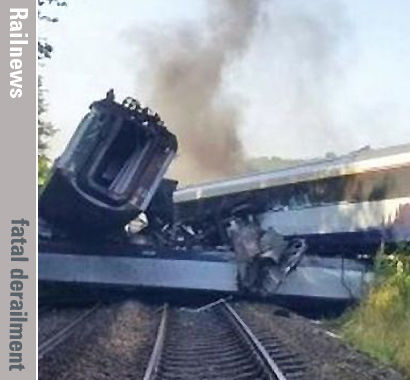PLANS have been outlined by Network Rail to increase the amount it spends on maintaining cuttings and embankments in the wake of the fatal derailment at Carmont near Stonehaven on 12 August, when a ScotRail train collided with a landslip. Water flowing from higher land beside the railway had washed stone on to the track, and three of the people on board were killed.
An interim report for the transport secretary was published by the Department for Transport today, and it reveals that Network Rail is responsible for more than 191,000 ‘earthwork assets’, most of which were built more than 150 years ago.
The report notes that ‘they were constructed without detailed engineering design and not to modern standards at a time when the risks associated with earthworks were not scientifically understood. Consequently, cuttings and embankments were constructed with steep and unreinforced slopes and while they have served us well, and despite many improvements over the years, they are not as robust as a modern-day equivalent.’
There have been various accidents caused by slips in recent years, particularly a derailment at the northern portal of Watford tunnel in 2017 and another incident near Corby in 2019, when an HST was stranded by debris which had been washed on the line. In this case the RAIB found that there was a lack of ‘effective communication’ over flood risks and ‘significant’ delays rescuing passengers. Network Rail said it would act on the RAIB’s recommendations.
Network Rail has categorised its earthworks in five classes from A (the best) to E (the worst). A total of 98,000 earthworks are in category A (lowest likelihood of failure or best condition) and around 1,000 are in category E (highest likelihood of failure or worst condition).
In Control Period 6 NR will invest £1.274 billion to maintain and renew earthworks and drainage, which will be 20 per cent more than in CP5, while up to a further £185 million from the ‘risk fund’ may be used when destructive weather strikes.
The report concludes that ‘critical to our plans for minimising safety and reliability and performance impacts caused by climate change is embedding resilience into the way that we design, build, operate, maintain and replace our railway assets. Our principle for replacing assets in the future will be “replace like with better” rather than “replace like for like”.’


